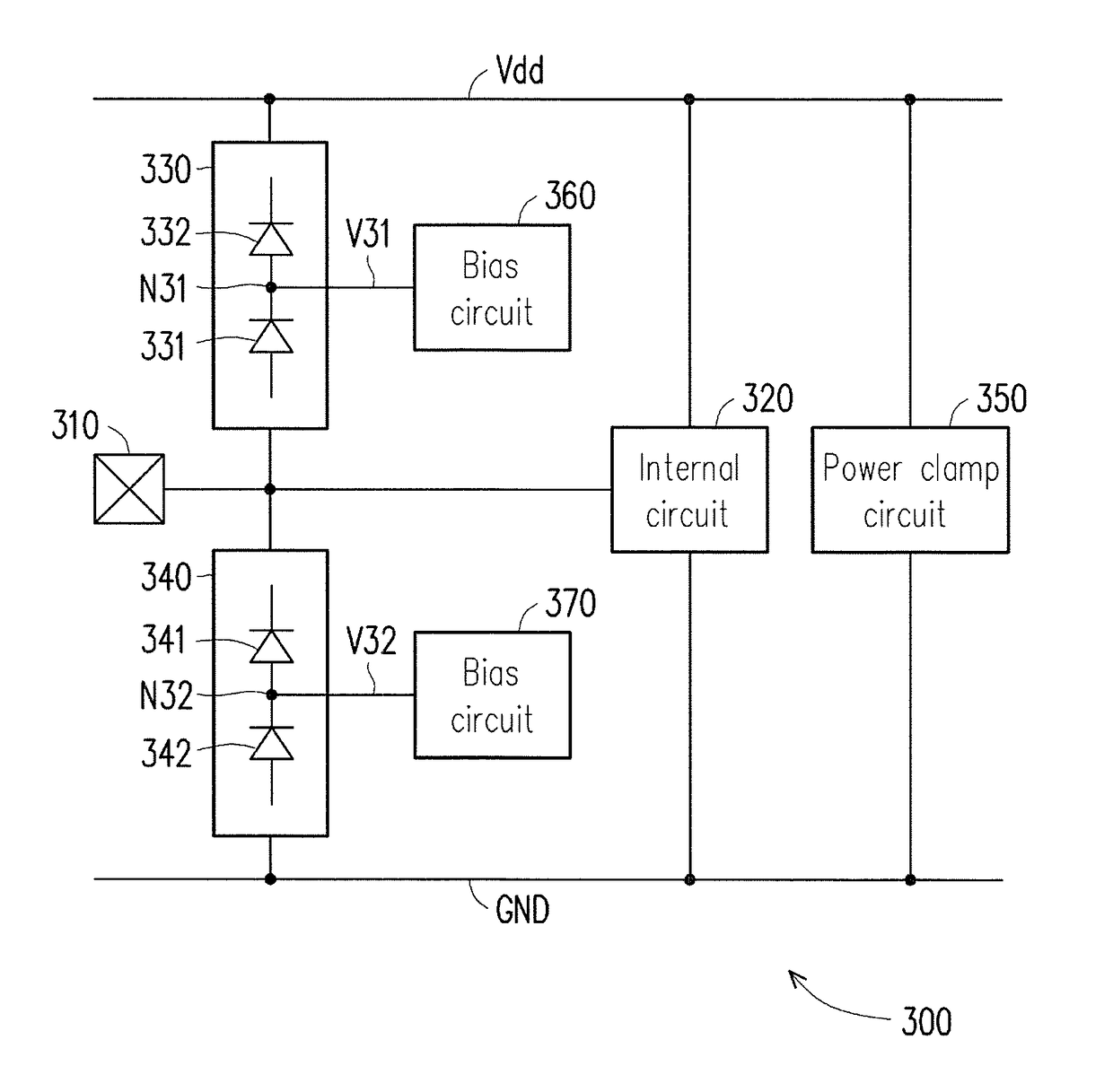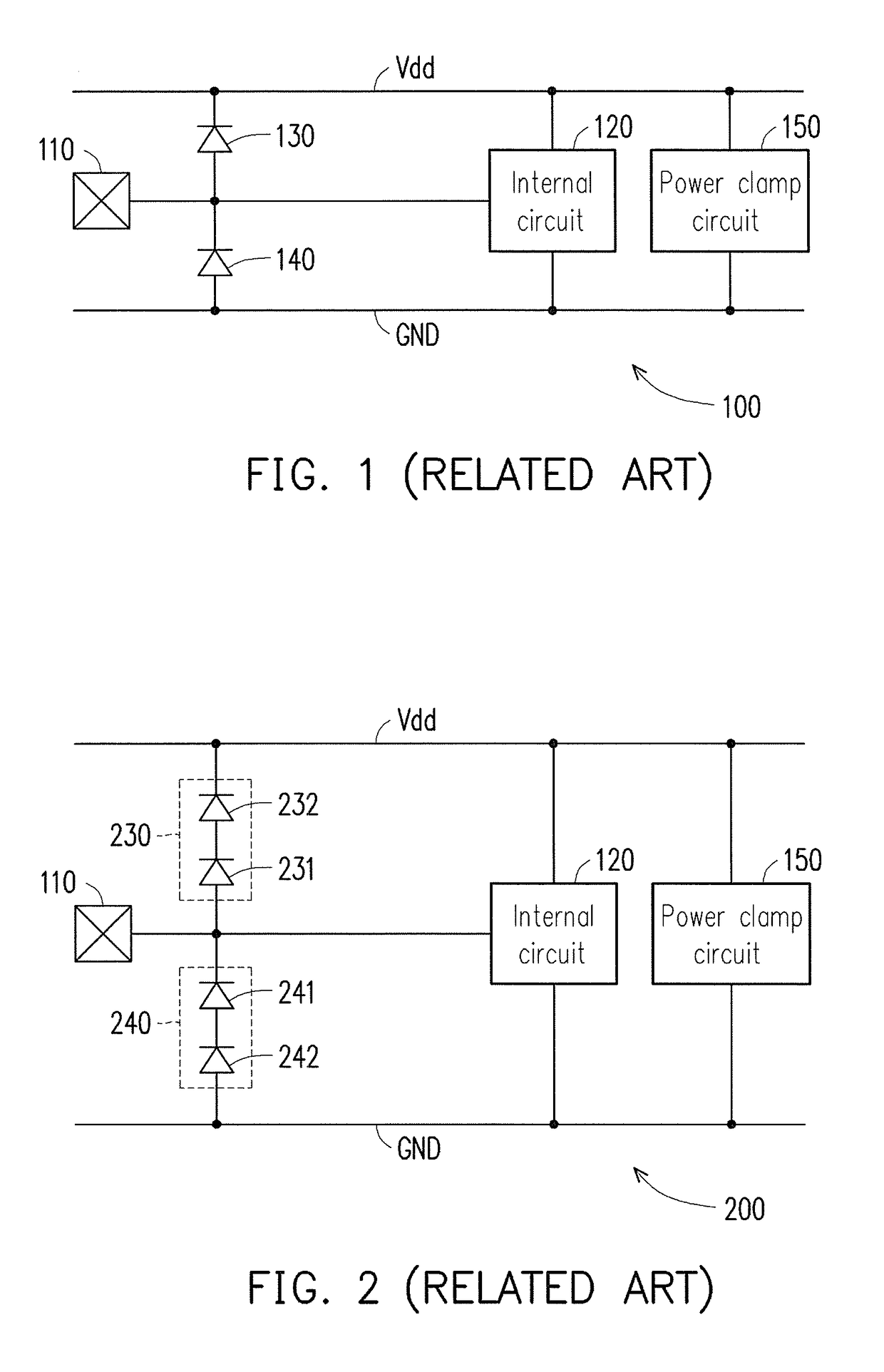Electrostatic discharge protection device and operation method thereof
- Summary
- Abstract
- Description
- Claims
- Application Information
AI Technical Summary
Benefits of technology
Problems solved by technology
Method used
Image
Examples
Embodiment Construction
[0029]The term “coupled (or connected)” used in this disclosure (including claims) may express any direct or indirect connection means. For instance, “a first apparatus is coupled (or connected) to a second apparatus” should be interpreted as “the first apparatus is directly connected to the second apparatus” or “the first apparatus is indirectly connected to the second apparatus through other apparatuses or connection means.” Moreover, wherever appropriate, elements / components / steps with the same reference numerals in the drawings and embodiments represent the same or similar parts. Elements / components / steps with the same reference numerals or names in different embodiments may be cross-referenced.
[0030]FIG. 1 is a schematic block circuit diagram of a conventional integrated circuit 100. The integrated circuit 100 includes a signal pad 110, an internal circuit 120, a diode 130, a diode 140, a supply voltage rail Vdd, a ground voltage rail GND, and a power clamp circuit 150. The sig...
PUM
 Login to View More
Login to View More Abstract
Description
Claims
Application Information
 Login to View More
Login to View More - R&D
- Intellectual Property
- Life Sciences
- Materials
- Tech Scout
- Unparalleled Data Quality
- Higher Quality Content
- 60% Fewer Hallucinations
Browse by: Latest US Patents, China's latest patents, Technical Efficacy Thesaurus, Application Domain, Technology Topic, Popular Technical Reports.
© 2025 PatSnap. All rights reserved.Legal|Privacy policy|Modern Slavery Act Transparency Statement|Sitemap|About US| Contact US: help@patsnap.com



